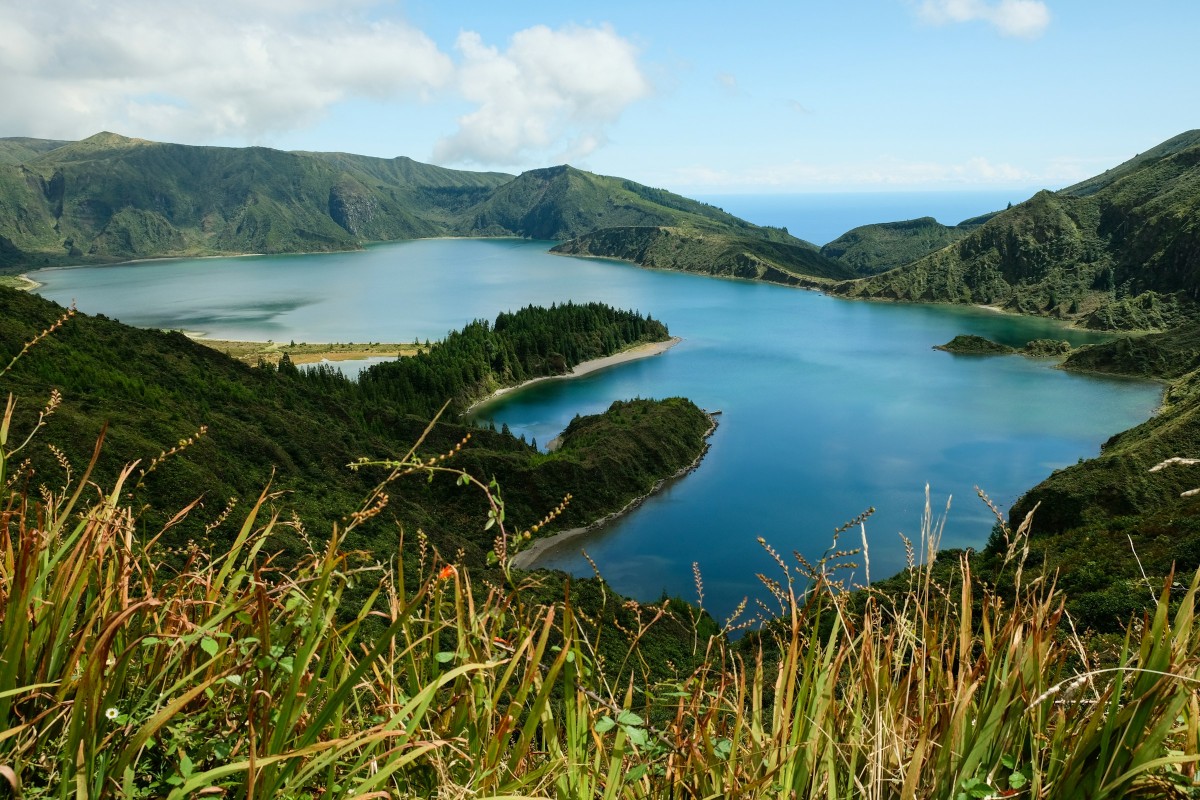
The Azores are a stunning Portuguese archipelago made up of nine volcanic islands scattered across the Atlantic Ocean. Known for their unique landscapes and rich culture, the islands offer something truly special in Europe. From crystal-clear lakes and volcanic craters to fajãs, waterfalls, and natural swimming pools, each island has its own distinct charm.
Whether you’re exploring São Miguel, Terceira, Faial, or the more off-the-beaten-path islands like Flores and Corvo, there’s always something amazing to see in this Atlantic paradise. Discover the top sights to visit in the Azores.
What to see in the Azores?
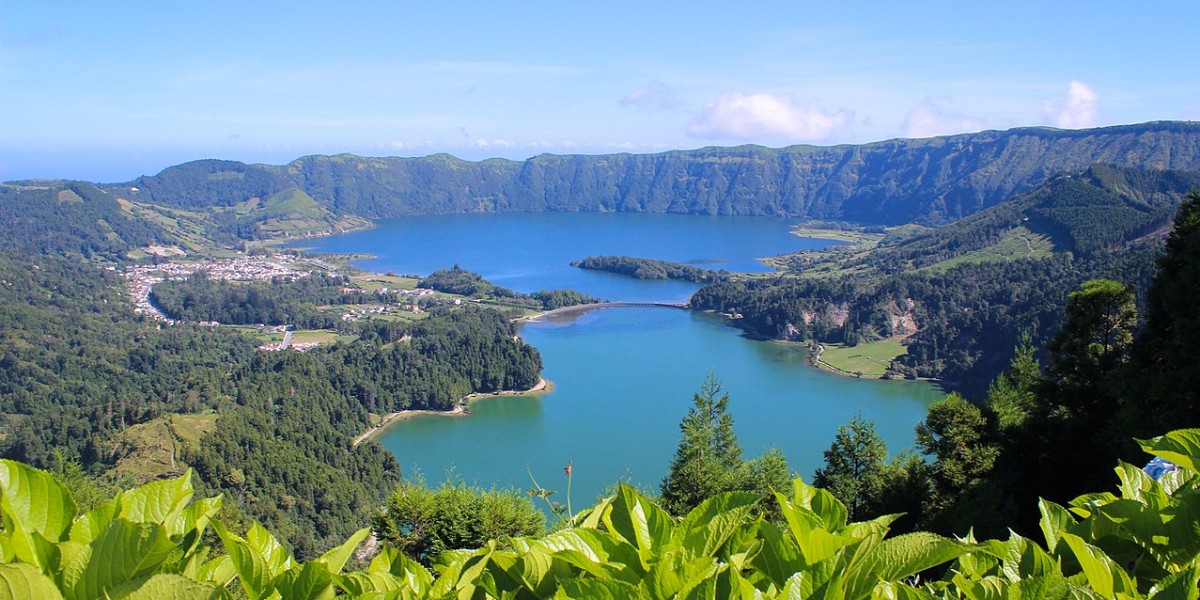
The Azores archipelago, with its nine volcanic islands in the middle of the Atlantic, offers an impressive variety of natural and cultural attractions. Each island has its own unique character, providing visitors with a truly unforgettable experience. From lakes and hot springs to black sand beaches and cliffs, the Azores are a paradise for nature lovers and adventure seekers alike.
What to see on Terceira Island in two days
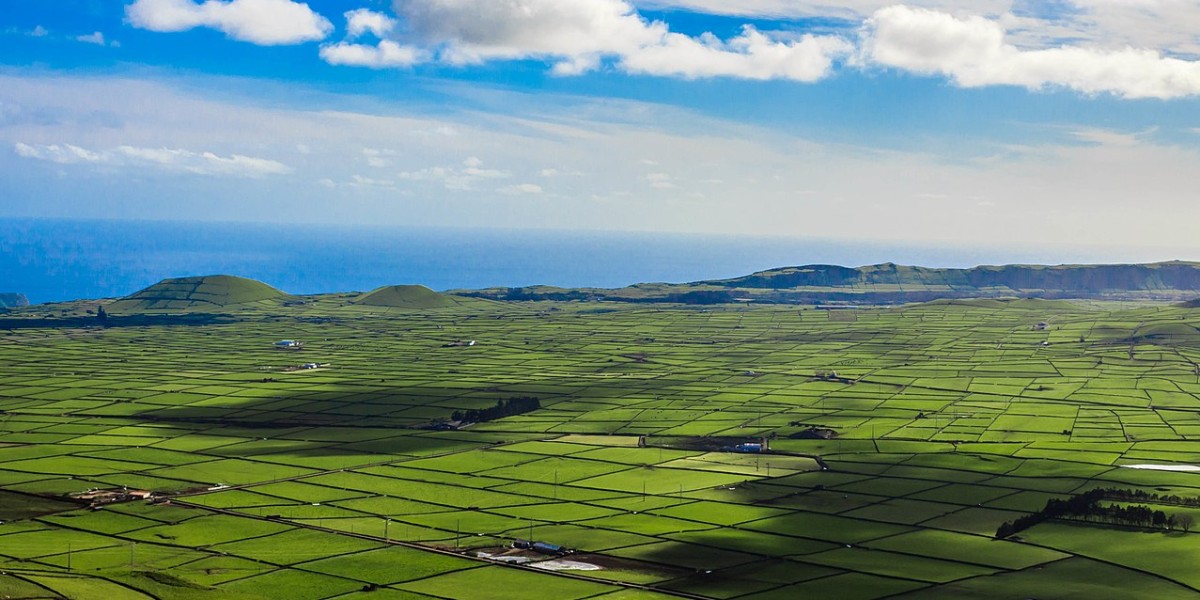
In just two days, you can explore the main highlights of the island, from the UNESCO World Heritage city of Angra do Heroísmo to natural wonders like Algar do Carvão and Furnas do Enxofre — some of the must-see sights on Terceira Island.
On the first day, start in Angra do Heroísmo, where you can visit Jardim Duque da Terceira, one of the most beautiful classical gardens in the archipelago, boasting a variety of subtropical and tropical plants. The city also offers other points of interest, such as the Angra Cathedral (Sé de Angra), the Marina, and the São Sebastião Fortress. Nearby, don’t miss a trip up Monte Brasil for stunning views.
On the second day, make sure to visit Algar do Carvão, an accessible volcanic chimney open to the public, and Furnas do Enxofre, where you can see fumaroles and other volcanic activity. To unwind, the Natural Pools of Biscoitos provide a unique swimming experience in crystal-clear waters surrounded by volcanic rock formations. Also, visit the viewpoint at Serra do Cume for breathtaking panoramic views.
What to see on São Miguel in three days

On the first day, it’s recommended to visit the Sete Cidades Lagoon, including the lagoons themselves and the Boca do Inferno viewpoint, which are some of the most popular attractions on São Miguel Island. On the second day, the Furnas area deserves your attention. Caldeira Velha, with its thermal waters, and Terra Nostra Park, famous for its iron-rich thermal pool, offer relaxing moments.
For the third day, plan a visit to Lagoa do Fogo, one of the island’s most beautiful landscapes, and the town of Vila Franca do Campo, where you can go on whale and dolphin watching tours or visit the islet Ilhéu de Vila Franca. Don’t forget to stop by the Ponta da Ferraria thermal baths, formed by volcanic eruptions that created natural pools combining hot spring waters, which can reach very high temperatures at their source.
The other Azores islands
Pico Island is famous for Mount Pico, the highest point in Portugal at 2,351 metres. The climb to the summit offers stunning views over the Atlantic and neighbouring islands. Additionally, the Gruta das Torres, the largest lava tunnel in the Azores, is a must-visit for caving enthusiasts. The Whalers’ Museum in the town of Madalena immerses visitors in the history of whaling, a key part of the island’s past economy.
On Faial Island, the Capelinhos Volcano, whose last eruption was in 1957, transformed the landscape, creating a lunar-like terrain that can be explored via trails and visits to the Volcano Interpretation Centre. The Faial Caldera, a massive crater around 400 metres deep, features walking routes that showcase the island’s biodiversity and offer panoramic views.
Santa Maria’s São Lourenço Bay Natural Reserve is perfect for hiking and wildlife observation. The Gonçalo Velho Lighthouse, located at the island’s easternmost point, offers spectacular ocean views and is a site of great historical significance.
São Jorge is known for its fajãs, small coastal plains formed by landslides. Fajã de Santo Cristo is one of the most famous, accessible by trails that wind through the island’s landscapes. The Sete Fontes Forest Park, with its walking paths and natural springs, is an ideal spot for hiking and connecting with nature.
Finally, Corvo Island has undergone infrastructure improvements. Situated in the western group of the Azores, it is the smallest and least populated inhabited island of Portugal, covering about 17.1 square kilometres with around 435 residents as of 2023. It offers a unique experience of tranquillity and natural beauty. The main attraction is the Caldeirão, an ancient volcanic crater now hosting a lagoon, surrounded by small hills reminiscent of the other Azorean islands. The island’s only village, Vila do Corvo, is notable for its narrow streets and traditional black stone houses. Corvo is recognised by UNESCO as a Biosphere Reserve due to its rich biodiversity and sustainable conservation practices. Besides these islands, the archipelago also includes Flores and Graciosa.
When is the best time to visit the Azores?
Spring, from April to June, is ideal for enjoying nature, with blooming landscapes and waterfalls at their peak. It’s also a great time for whale watching due to the migration of various whale and dolphin species. Summer, from July to August, brings warmer temperatures and less rain, perfect for outdoor activities like hiking and water sports, as well as enjoying the traditional festivals that enliven the islands. Autumn offers mild weather and fewer tourists, providing a more peaceful experience.
For a first visit, it’s recommended to spend at least 5 to 7 days on São Miguel, the largest island, allowing time to see the main sights and enjoy activities such as hiking and lagoon visits. If you want to explore several islands, 10 to 15 days is advisable to comfortably visit 3 to 4 islands. For a more comprehensive experience visiting all nine Azores islands, about a month would be ideal.
What to do in the Azores with children
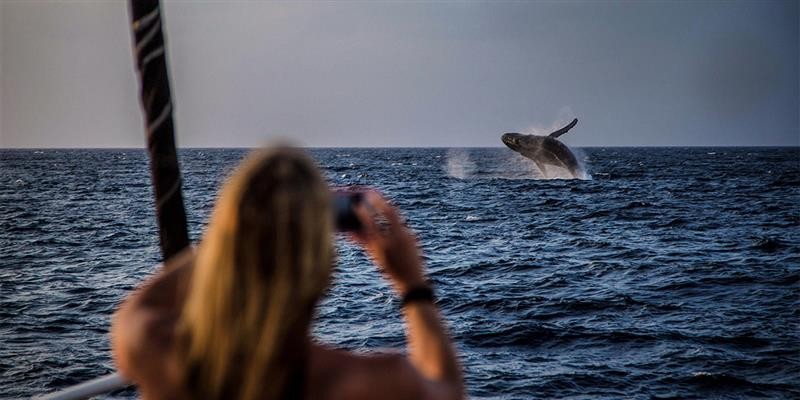
One of the most memorable experiences is undoubtedly whale and dolphin watching. The waters around the Azores are a natural habitat for various species of whales and dolphins, and many companies offer safe and educational boat trips. Children will be amazed to see these magnificent creatures in their natural environment. Additionally, black sand beaches like Praia de Santa Bárbara on São Miguel are perfect for a fun day by the sea.
Kids can also enjoy the natural swimming pools in Lagoa, which have dedicated areas for younger visitors, complete with facilities such as cafés and changing rooms. Beyond outdoor activities, the Azores offer educational and interactive experiences. The Expolab – Centro Ciência Viva, located in Lagoa town, features interactive exhibitions and science workshops that spark children’s curiosity. For animal lovers, Quinta da Paródia offers pony rides and close contact with nature.
How to get to the Azores

Getting to the Azores is easier than you might think, with several transport options available to take you to this Atlantic paradise. The most common and convenient way to reach the archipelago is by air, with regular flights from various European and North American cities.
The main gateway to the Azores is João Paulo II Airport, located in Ponta Delgada on São Miguel Island. Another important airport is Lajes International Airport, also known as Lajes Air Base, situated in the parish of Lajes in the municipality of Praia da Vitória, in the northeast part of the island.
Travelling between the Islands
Once in the Azores, you can explore the other islands using inter-island flights. SATA Air Açores operates an extensive network connecting all nine islands, allowing you to visit several islands during your stay.
Another option for island hopping is by sea. Atlânticoline runs ferries linking the islands, offering a slower but often more scenic alternative to flights. This service is especially useful for travelling between nearby islands, such as:
- Faial, Pico and São Jorge (known as the “Triangle”)
- Flores and Corvo
- São Miguel and Santa Maria
What to eat in the Azores?
Azorean cuisine reflects the rich cultural heritage and abundance of natural resources of the archipelago. Each island has its own specialties, giving visitors the chance to enjoy a diverse and authentic culinary experience. Here are some typical dishes you can try on each of the nine Azores islands:
São Miguel

One of the standout dishes in São Miguel is the Cozido das Furnas, a stew of meats and vegetables slowly cooked using the geothermal heat from the volcanic calderas in Furnas, resulting in an unparalleled flavour. Another local favourite is Bife à Regional, made with locally sourced beef, seasoned with garlic and ‘pimenta da terra’ (a type of local pepper), and served with chips, reflecting the simplicity and richness of local ingredients.
Moving to the sweet side of things, Queijadas da Vila—originating from Vila Franca do Campo—are particularly popular. These delicate pastries feature a thin crust and a sweet filling that delights the palate. To accompany them, nothing beats a cup of tea from the Gorreana plantations, the oldest tea factory in Europe, located on the island’s northern coast.
Santa Maria
The cuisine of Santa Maria Island is a true reflection of its traditions and the richness of local produce. One of the highlights is caldo de nabos, a turnip soup made with a specific variety of turnip cultivated in the parish of Santa Bárbara, known for its slightly bitter taste. This soup is enriched with pork, streaky bacon, and chouriço, and is traditionally served with slices of bread soaked in the broth. Another typical dish is bolo da panela, a dense, flavourful bread baked in a cast-iron pot, often accompanying festive meals.
Santa Maria’s confectionery is also noteworthy, especially the biscoitos de orelha—triangular biscuits easily recognised by their shape and cut edges, commonly found at local celebrations. Another local specialty is the meloa de Santa Maria, a melon prized for its sweet flavour and intense aroma, distinguished by its greenish skin and orange flesh. To accompany these treats, wines produced on the slopes of São Lourenço and Maia offer a unique tasting experience, complementing the island’s rich gastronomic heritage.
Terceira

One of the most iconic dishes of Terceira is Alcatra, a slow-cooked meat stew prepared in a traditional clay pot called an alguidar. It’s seasoned with wine, garlic, bay leaf, and spices, resulting in a rich, succulent, and aromatic dish. Another traditional speciality is the Sopa do Espírito Santo (Holy Spirit Soup), linked to religious festivities, made with meat, bread, cabbage, mint, and spices, and served during the celebrations of the Divine Holy Spirit.
Seafood is also central to Terceira’s cuisine. Fish such as boca-negra and veja are often grilled or stewed, offering fresh, authentic flavours. In terms of sweets, Queijadas Dona Amélia, made with honey, cinnamon, and cornmeal, stand out, alongside Alfenim, an artistic traditional sweet moulded into intricate shapes — both embody the island’s rich cultural heritage.
Graciosa
Fresh fish dishes are a staple on Graciosa, with fried fish accompanied by molhanga—a typical sauce made from vinegar, garlic, and spices that enhances the local fish’s flavour. Other popular dishes include fish stews and roasts prepared with aromatic herbs and fresh ingredients, and the traditional molho à pescador, which uses local vinegar, saffron, and garlic to season fish. The use of açaflor, a local herb with a strong and elegant flavour, is common in soups and sauces, adding a distinctive touch to Graciosa’s dishes.
Graciosa’s sweets are equally rich and varied. The Queijadas da Graciosa—traditional cakes made from milk, sugar, eggs, flour, butter, and cinnamon—have become a symbol of the island. Other typical treats include Pastéis de Arroz, Queijadas de Feijão, Rosquilhas de Aguardente, and Rochedos, all reflecting the island’s confectionery heritage. Complementing these delicacies are local wines such as Vinho Pedras Brancas, offering a unique tasting experience that enhances Graciosa’s culinary tradition.
São Jorge
A signature dish of São Jorge is Caldo de Peixe, a soup made with various fish types, potatoes, onions, and aromatic herbs, often served as a starter or main course. Another highlight is the Amêijoas da Caldeira de Santo Cristo—clams exclusive to the island, harvested from the shores of the Lagoa da Fajã de Santo Cristo, prized for their freshness and unique flavour. The local delicacy of linguiça with yam (a locally cultivated tuber often used instead of potato) is also a must-try.
São Jorge’s sweets include coscorões, typical Christmas treats drizzled with honey or salt, and rosquilhas de aguardente, associated with Easter celebrations. Espécies—horseshoe-shaped spiced pastries with visible filling through small ‘windows’—are flavoured with spices like fennel, cinnamon, or pepper. Another emblematic product is the São Jorge Cheese, a Protected Designation of Origin (PDO) cheese made exclusively on the island from raw cow’s milk, known for its strong, slightly spicy flavour.
Pico
Pico’s gastronomy reflects its culture and natural resources. Traditional dishes include fish soup or broth, prepared with a mix of fish species, potatoes, onions, and aromatic herbs, creating a comforting and flavoursome meal. Bolo de milho (cornbread), a dense and slightly sweet bread, often accompanies meals and is especially enjoyed with butter or local cheeses. Pico Cheese and São João do Pico Cheese, both made from cow’s milk, are known for their creamy texture and distinctive taste. Pico’s regional sausage, usually served with boiled yam, offers a blend of intense and traditional flavours. The artisanal manteiga rainha (queen butter) is prized for its creaminess and distinctive flavour.
Seafood is also key to Pico’s cuisine. The polvo guisado à moda do Pico—octopus slowly cooked with red wine and spices—is a local speciality beloved by residents and visitors alike. Vejas fritas com batata branca (fried local fish with white potatoes) is another typical dish, where fish is fried to a golden crisp and served with local potatoes. The island is also famous for its wines, such as Terras de Lava, Frei Gigante, and Czar, made from grape varieties grown in volcanic soils, giving them a unique taste. Traditional drinks include licor de nêveda, angélica (a sweet fortified wine), and fig brandy, all showcasing the richness and diversity of local production.
Faial
Faial is known for its traditional cheeses, notably Queijo "O Morro", a soft, buttery cheese made from pasteurised milk, perfect as a starter or accompaniment. Also notable is the Queijo da Ilha Azul, a semi-hard yellowish cheese crafted following a traditional recipe that gives it a unique flavour characteristic of the island.
In terms of sweets, the Fofas do Faial are typical carnival treats filled with lemon cream, produced in large quantities during the festive season and an essential presence on the island’s celebratory tables.
Flores
Flores Cheese is a standout product, made artisanally from cow’s milk and available in fresh, cured, and buttery varieties. Local dairies, such as the Traditional Dairy in Santa Cruz das Flores and Pico Redondo Dairy in Fajãzinha, maintain traditional production methods, resulting in cheeses with distinctive flavour and texture. The island is also known for its creamy artisanal yoghurts in glass jars, available in various flavours like natural, pineapple, and passion fruit.
Another Flores speciality is the pastéis de erva-patinha, made with a local seaweed rich in nutrients and flavour. These pastries combine the seaweed with onion, garlic, chives, paprika paste, and chopped parsley, then are fried to create a snack that is crispy on the outside and soft inside.
Corvo
Corvo Cheese is one of the island’s most emblematic delicacies, made traditionally with raw cow’s milk, animal rennet, and salt. With a minimum curing period of 60 days, it has a semi-hard texture, yellowish colour, and an intense, slightly spicy flavour. Its production is limited, making it a prized rarity among visitors. Traditionally, the cheese is shared during the Holy Spirit celebrations, symbolising unity and sharing among the islanders.
Corvo’s cuisine also includes dishes like tortas de erva do calhau, made with a local seaweed, and liver sauce, a tasty dish reflecting the simplicity and bold flavours of traditional cooking. Cornbread (broa de milho) is a common accompaniment, often served alongside main dishes or as a base for local snacks.
Living in the Azores
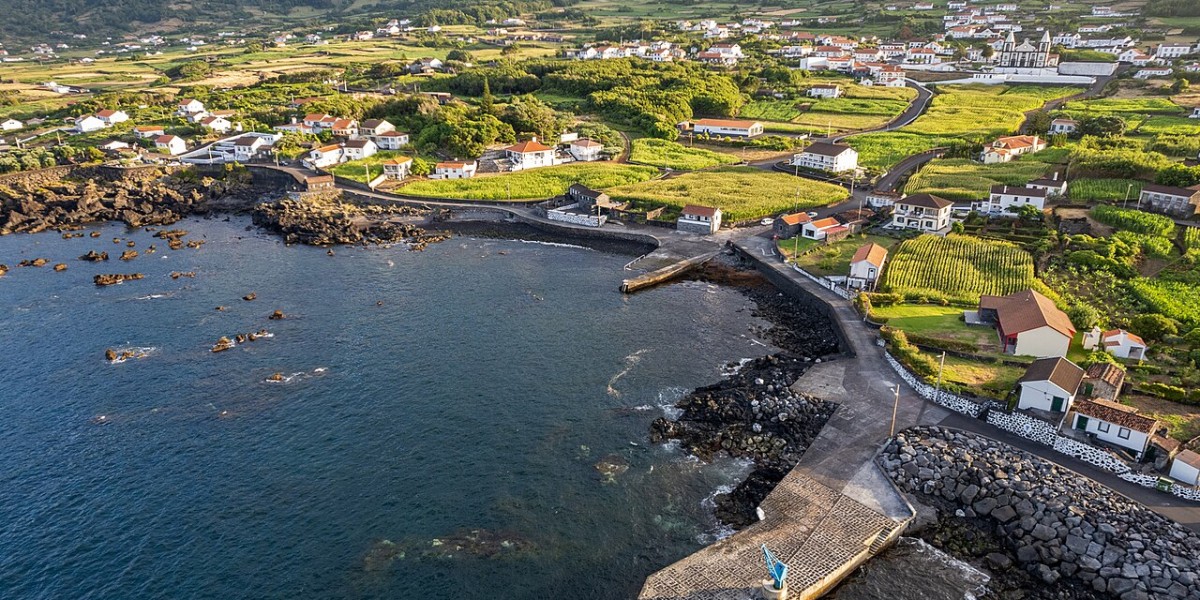
Living in the Azores means embracing tranquillity, close contact with nature, and a high quality of life. Moreover, the cost of living in the Azores is generally lower than on mainland Portugal, with more affordable housing and food prices, alongside a reduced VAT rate (18% on the islands compared to 23% on the mainland). The local cuisine, based on fresh products such as fish, pasture-raised beef, and organic vegetables, contributes to a healthy and flavoursome diet.
